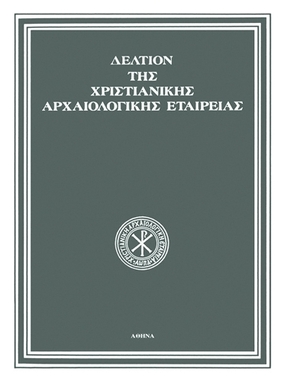Η αναχρονολόγηση του ναού της Παναγίας της Καθολικής στη Γαστούνη
Part of : Δελτίον της Χριστιανικής Αρχαιολογικής Εταιρείας ; Vol.42, 2003, pages 63-78
Issue:
Pages:
63-78
Parallel Title:
The Redating of the Church of the Panaghia Katholike at Gastouni
Section Title:
Articles
Abstract:
The church of the Panaghia Katholike (Virgin the Catholic) at Gastouni is of cross-in-square type with dome andtwo columns (Figs 1-2). Hitherto, the generally accepteddate for the monument has been the last quarter of thetwelfth century.Recently, in the sanctuary apse and in a layer of wallpaintings dated by inscription to 1702 (Fig. 3), a two-lineinscription, which copies the first donor inscription of thechurch, was revealed (Figs 5-6). In this, <p¥U7! (6787 =1278/9) is mentioned as the year the church was constructed,and the Kallegopoulos brothers - Gouliamos, Ioannes, Nikolaos, Demetrios, Konstantinos and Georgios - and theirrespective wives - Maria, Anna, Maria, Sebaste, Maria andKonstantza - are commemorated as the donors. Part of thisinscription is repeated in another inscription incised on thestone lintel of the west entrance to the church (Figs 7-8). Theauthenticity of the text is confirmed by comparative study ofthe information it provides. Specifically, the date concurswith the archaeological evidence yielded by the church, builtinto the walls of which is a proto-majolica bowl of Grid Irontype (Fig. 4), which is found outside Italy in the late thirteenthcentury.Furthermore, sculptures with Western influences are used inthe monument, such as the frame of the north doorway andthe column capital in the double central opening between thenave and the narthex (Fig. 9).The donors were presumably Greek nobles who retainedtheir privileges after 1205, by declaring submission to theLatins.
Subject:
Subject (LC):




